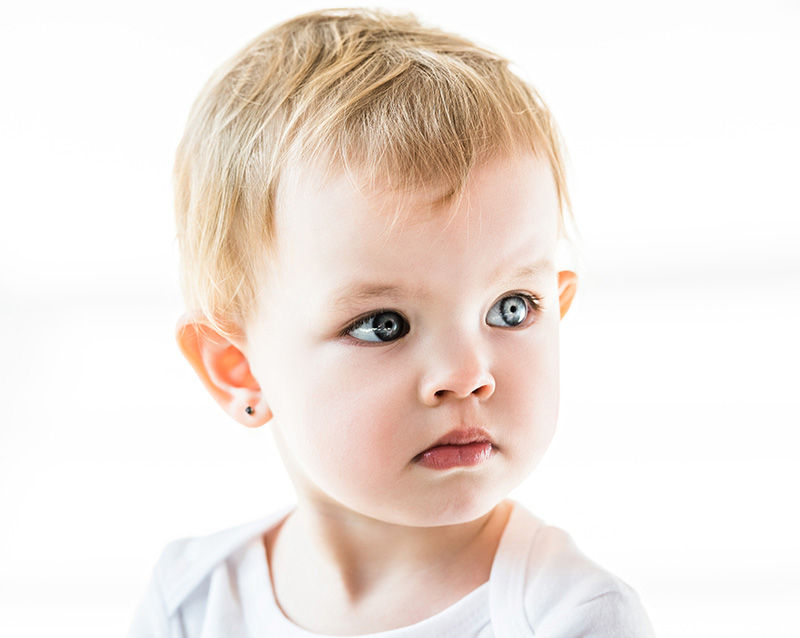Infantile and Pediatric Glaucoma
Pediatric glaucoma is a rare condition that requires prompt and effective treatment in order to preserve a child’s vision. At Fraser Eye Care, our experienced pediatric ophthalmologist, Dr. Lucas Bonafede, can effectively diagnose and treat pediatric or infantile glaucoma.
What is Glaucoma?
Glaucoma is a group of eye diseases that cause damage to the optic nerve, the nerve that connects the eye to the brain. Glaucoma is often caused by increased intraocular pressure (pressure in the eye), which can damage the optic nerve and cause vision loss. Glaucoma cannot be cured, but an experienced ophthalmologist can help manage the condition and protect a patient’s vision.1
Types of Pediatric Glaucoma
Glaucoma in children is rare, and up to 80% of children diagnosed with glaucoma are diagnosed before their first birthday.2
There are different types of glaucoma in children:
- Primary Congenital Glaucoma: this is glaucoma that a child is born with, and is caused by improper development of the eye’s drainage system. This causes fluid to accumulate in the eye, elevating intraocular pressure and damaging the optic nerve. In many cases, parents are the first people to notice signs of this type of pediatric or infantile glaucoma, which may include light sensitivity, refusal to open the eyes, and excessively watery eyes. Sometimes, when a child has this type of glaucoma, his or her eyes will be larger than normal and the corneas may appear hazy.
- Secondary Glaucomas: Secondary glaucomas are a diverse group of diseases in which glaucoma is associated with another condition, such as ocular abnormalities, systemic disease, or previous eye surgery. Common conditions associated with secondary glaucoma include: Axenfeld-Rieger anomaly, aniridia, microphthalmos, Sturge-Weber syndrome, Down syndrome, uveitis, retinopathy of prematurity, and trauma. Children with glaucoma may show sensitivity to light, difficulty adjusting to the dark, lots of blinking, impaired vision, and red eyes.
- Juvenile Open-Angle Glaucoma (JOAG): This type of glaucoma usually presents between the ages of 10 and 35. This condition often can be inherited and runs in the family. In many cases, it shows no symptoms until it has already progressed to an advanced stage.3
Pediatric Glaucoma Symptoms
Symptoms of pediatric glaucoma differ according to the type of glaucoma, and may include:
- Eyes that appear abnormally large
- Excessive tearing
- Refusal to open the eyes
- Sensitivity to light
- Difficulty adjusting to the dark
- Hazy corneas
- Excessive blinking
- Impaired vision
- Red eyes
- Involuntary muscle spasms around the eyes and eye twitching
- Headaches

Treatment of Pediatric Glaucoma
Pediatric glaucoma can be aggressive and needs to be managed properly in order to prevent further damage to the optic nerve and/or eventual vision loss. The goal of pediatric glaucoma treatment is to lower the intraocular pressure. Some types of glaucoma can be treated with eye drops, while others require surgical intervention.
Medications for Pediatric Glaucoma
Some pediatric glaucoma can be managed with eye drops and oral medications to lower the eye pressure. There are multiple types of drops that can be utilized in children to help prevent high intraocular pressure. Some children will be able to be treated long term with drops and medications, while others will use medications while awaiting surgery.
Surgery for Pediatric Glaucoma
Managing pediatric glaucoma often requires multiple procedures as well as detailed examinations conducted under anesthesia. Surgery is intended to lower the eye pressure. Primary Congenital Glaucoma almost always requires surgical intervention, either by performing a trabeculotomy or goniotomy to help the eye drain the intraocular fluid more efficiently. Other glaucoma surgeries such as tube shunts and trabeculectomies may be required in some cases.
Additional Treatment for Pediatric Glaucoma
Even after surgery, it may be necessary to treat pediatric glaucoma with medications to control intraocular pressure. Children with glaucoma may also develop a refractive error like myopia (nearsightedness), requiring eyeglasses. Amblyopia (“lazy eye”) and strabismus (when the eyes are misaligned) can also occur in children with glaucoma and may require additional treatment.4
Contact Fraser Eye Care in Detroit
If your child is exhibiting signs of pediatric glaucoma, it is important to seek a prompt diagnosis and treatment in order to preserve his or her vision. Dr. Bonafede at Fraser Eye Care in Detroit and Royal Oak is highly experienced in pediatric ophthalmology and can provide effective management of infantile or childhood glaucoma. To schedule a consultation with Dr. Bonafede, please contact us today.
Ready to Schedule an Appointment?
Book Online Sources
Sources
1 National Eye Institute. Glaucoma. Available: https://www.nei.nih.gov/learn-about-eye-health/eye-conditions-and-diseases/glaucoma. Accessed September 7, 2021.
2 Optometry Times. Pediatric glaucoma: types, tests and treatments. Available: https://www.optometrytimes.com/view/pediatric-glaucoma-types-tests-and-treatments. Accessed September 7, 2021.
3 New York Eye and Ear Infirmary of Mount Sinai. Pediatric Glaucoma. Available: https://www.nyee.edu/care/eye/glaucoma/pediatric. Accessed September 7, 2021.
4 American Association for Pediatric Ophthalmology and Strabismus. Glaucoma for Children. Available: https://aapos.org/glossary/glaucoma-for-children. Accessed September 7, 2021.
Dr. Lucas Bonafede has either authored or reviewed and approved this content.

